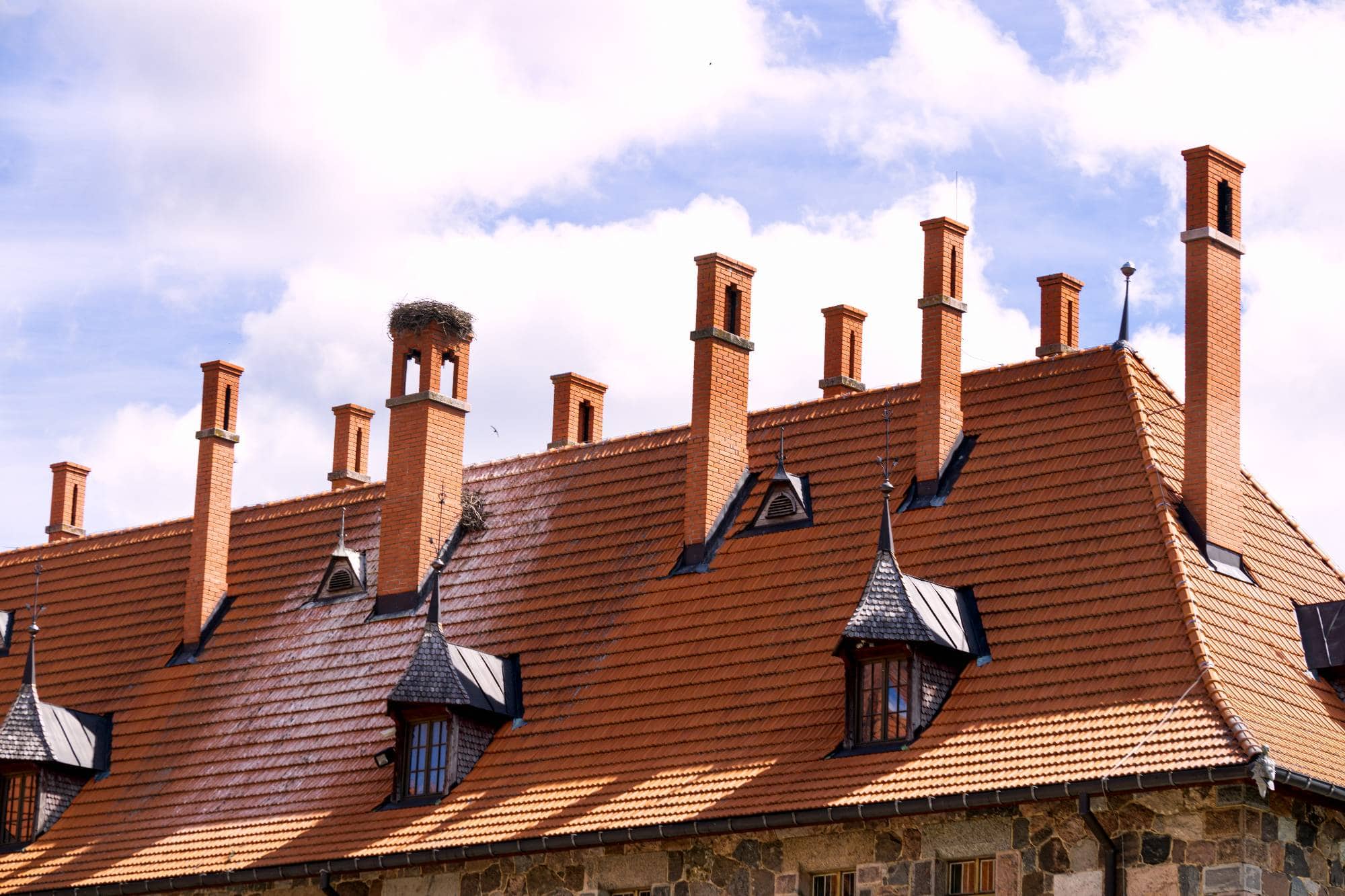Professional chimney inspections are your first line of defense against carbon monoxide poisoning in Massachusetts homes.
Share:

Carbon monoxide develops when fuel doesn’t burn completely in your fireplace, furnace, or heating system. Under normal conditions, your chimney safely vents these combustion gases outside your home. But when something goes wrong with your chimney system, those deadly gases can back up into your living space instead.
The problem is that carbon monoxide gives you no warning. It’s completely odorless and colorless, earning its nickname as “the silent killer.” By the time you notice symptoms like headaches, dizziness, or nausea, dangerous levels may already be building in your home.
Several chimney problems can force carbon monoxide back into your home instead of safely outside. Blockages are the most common culprit—animal nests, leaves, debris, or even snow can obstruct your flue. When this happens, combustion gases have nowhere to go but back into your house.
Damaged or deteriorated chimney liners create another serious risk. These protective barriers can crack, collapse, or develop gaps over time, allowing dangerous gases to leak into your home’s structure. In Norfolk and Plymouth County, our harsh freeze-thaw cycles accelerate this damage as water expands and contracts in masonry joints.
Improper chimney sizing also contributes to carbon monoxide problems. If your flue is too large for your heating appliance, it won’t create enough draft to pull gases up and out. Conversely, an undersized flue can’t handle the volume of combustion gases your system produces.
Even structural issues like loose or missing mortar joints can disrupt proper ventilation. When your chimney can’t maintain adequate draft, carbon monoxide-laden gases settle in your home instead of venting safely outside.
Several chimney problems can force carbon monoxide back into your home instead of safely outside. Blockages are the most common culprit—animal nests, leaves, debris, or even snow can obstruct your flue. When this happens, combustion gases have nowhere to go but back into your house.
Damaged or deteriorated chimney liners create another serious risk. These protective barriers can crack, collapse, or develop gaps over time, allowing dangerous gases to leak into your home’s structure. In Norfolk and Plymouth County, our harsh freeze-thaw cycles accelerate this damage as water expands and contracts in masonry joints.
Improper chimney sizing also contributes to carbon monoxide problems. If your flue is too large for your heating appliance, it won’t create enough draft to pull gases up and out. Conversely, an undersized flue can’t handle the volume of combustion gases your system produces.
Even structural issues like loose or missing mortar joints can disrupt proper ventilation. When your chimney can’t maintain adequate draft, carbon monoxide-laden gases settle in your home instead of venting safely outside.
Professional chimney inspections follow strict NFPA 211 standards that specifically target carbon monoxide risks. These comprehensive evaluations go far beyond what you can see from the ground, using specialized equipment and expertise to identify problems before they become deadly.
We examine every component of your chimney system, from the firebox to the chimney top. We check for blockages, structural damage, and ventilation issues that could allow carbon monoxide to enter your home.
NFPA 211 defines three levels of chimney inspection, each designed to catch different types of carbon monoxide hazards. Level 1 inspections are the minimum annual requirement for unchanged systems. These examine all readily accessible parts of your chimney, checking for obstructions, structural soundness, and proper connections.
Level 2 inspections are required when you’ve made changes to your heating system, purchased a home, or experienced a chimney fire. These more detailed evaluations include video scanning of your flue interior to detect hidden damage that could cause carbon monoxide leaks. The camera reveals cracks, gaps, or deterioration invisible during standard inspections.
Level 3 inspections involve removing parts of your chimney or building structure when serious hazards are suspected. While rare, these intensive evaluations are sometimes necessary to fully assess carbon monoxide risks in damaged systems.
Each inspection level includes specific carbon monoxide safety checks. We verify that your chimney creates adequate draft, examine flue liner integrity, and confirm that all connections are secure. We also check for signs of backdrafting like soot stains or rust around your heating appliance.
Modern chimney inspections use sophisticated tools that can detect carbon monoxide risks invisible to the naked eye. Video cameras reveal the internal condition of your flue, showing cracks, obstructions, or deterioration that could cause dangerous gas leaks.
We also use specialized instruments to measure draft and airflow through your chimney system. Poor draft often indicates problems that can lead to carbon monoxide backdrafting. These measurements help us identify issues before they become life-threatening.
Visual inspection techniques have evolved significantly beyond traditional flashlight and mirror methods. We now document chimney conditions with high-resolution cameras, providing accurate assessments without guesswork. This technology ensures that even minor problems affecting carbon monoxide safety are identified and addressed.
We also examine your home’s ventilation dynamics. We check how your chimney interacts with exhaust fans, HVAC systems, and other appliances that might affect draft. This comprehensive approach ensures your entire home’s ventilation system works together to prevent carbon monoxide accumulation.
Carbon monoxide poisoning is completely preventable with proper chimney maintenance and regular professional inspections. The NFPA recommends annual inspections specifically because they catch problems before they become deadly—and this recommendation exists because it saves lives.
Don’t wait until you smell smoke or notice performance problems with your heating system. By then, carbon monoxide may already be accumulating in your home. Professional inspections identify risks while they’re still manageable, protecting your family from this invisible threat.
If you’re in Norfolk or Plymouth County and haven’t had your chimney inspected in the past year, now is the time to schedule this critical safety service. Contact Above and Beyond Chimney to ensure your family’s protection against carbon monoxide poisoning.
Article details:
Share: